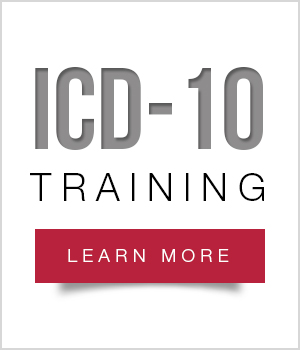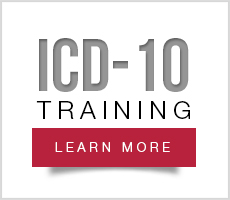What is ICD-10?
The World Health Organization (WHO) publishes the International Classification of Diseases (ICD) code set, which defines diseases, signs, symptoms, abnormal findings, complaints, social circumstances, and external causes of injury or disease.
The ICD-10 is copyrighted by the WHO. The WHO authorized a US adaptation of the code set for government purposes. As agreed, all modifications to the ICD-10 must conform to WHO conventions for the ICD. Currently, the United States uses the ICD code set, Ninth Edition (ICD-9), originally published in 1977, and adopted by this country in 1979 as a system for classification of morbidity data and subsequently mandated as the Medicare claims standard in 1989 in the following forms:
-
ICD-9-CM (Volume 1), the tabular index of diagnostic codes
-
ICD-9-CM (Volume 2), the alphabetical index of diagnostic codes
-
ICD-9-CM (Volume 3), institutional procedure codes used only in inpatient hospital settings
In 1990, the WHO updated its international version of the ICD-10 (Tenth Edition, Clinical Modification) code set for mortality reporting. Other countries began adopting ICD-10 in 1994, but the United States only partially adopted ICD-10 in 1999 for mortality reporting. The National Center for Health Statistics (NCHS), the federal agency responsible for the United States’ use of ICD-10, developed ICD-10-CM, a clinical modification of the classification for morbidity reporting purposes, to replace our ICD-9-CM Codes, Volumes 1 and 2. The NCHS developed ICD-10-CM following a thorough evaluation by a technical advisory panel and extensive consultation with physician groups, clinical coders, and others to ensure clinical accuracy and usefulness.
On October 1, 2015, a key element of the data foundation of the United States’ health care system will undergo a major transformation.
We will transition from the decades-old Ninth Edition of the International Classification of Diseases (ICD-9) set of diagnosis and inpatient procedure codes to the Tenth Edition of those code sets—or ICD-10—the version currently used by most developed countries throughout the world. ICD-10 allows for greater specificity and detail in describing a patient’s diagnosis and in classifying inpatient procedures, so reimbursement can better reflect the intensity of the patient's condition and diagnostic needs.
This transition will have a major impact on anyone who uses health care information that contains a diagnosis and/or inpatient procedure code, including:
- Home Health Agencies
- Hospitals
- Health care practitioners and institutions
- Health insurers and other third-party payers
- Electronic-transactions clearinghouses
- Hardware and software manufacturers and vendors
- Billing and practice-management service providers
- Health care administrative and oversight agencies
- Public and private healthcare research institutions
Planning and preparation are important to help streamline your practice’s transition.
Making the Transition to ICD-10 is Not Optional.
This transition will affect all covered entities as defined by the Health Insurance Portability and Accountability Act of 1996 (HIPAA). Covered entities are required to adopt ICD-10 codes for services provided on or after the October 1, 2015, compliance date. For inpatient claims, ICD-10 diagnosis and procedure codes are required for all stays with discharge dates on or after October 1, 2015.
Please note that the transition to ICD-10 does not directly affect Home Health Agencies, who do not use the Current Procedural Terminology (CPT) codes. Healthcare Common Procedure Coding System (HCPCS) codes which ARE used in Medicare Home Health billing, will not be affected by the change to ICD-10-CM.
New Final Rule Provided Additional Year for Preparation
On April 1, 2014, the U.S. Department of Health and Human Services issued a final rule establishing a new compliance date of October 1, 2015. Postponing the implementation date allowed for an additional year of preparation. However, the time is near and agencys are running out of time to prepare for the nearing transition!
About Version 5010
To process ICD-10 claims or other transactions electronically, home health agencies, payers, and vendors must first implement the “Version 5010” electronic health care transaction standards mandated by HIPAA. The previous HIPAA “Version 4010/4010A1” transaction standards do not support the use of the ICD-10 codes. Clearinghouses will not convert ICD-9 codes to ICD-10 if you are using a Version 4010/4010A1 format.
All parties covered by HIPAA were required to have installed and tested Version 5010 in their practice management, billing and processing systems by January 1, 2012. It is important to know that though 5010 transactions will be in use before October 1, 2015, covered entities are not to use the ICD-10 codes in production (outside of a testing environment) prior to that date.
Industry Insights
For Healthcare at home
Get the latest news and business insights affecting home health, hospice and home care providers.
Subscribe Today


